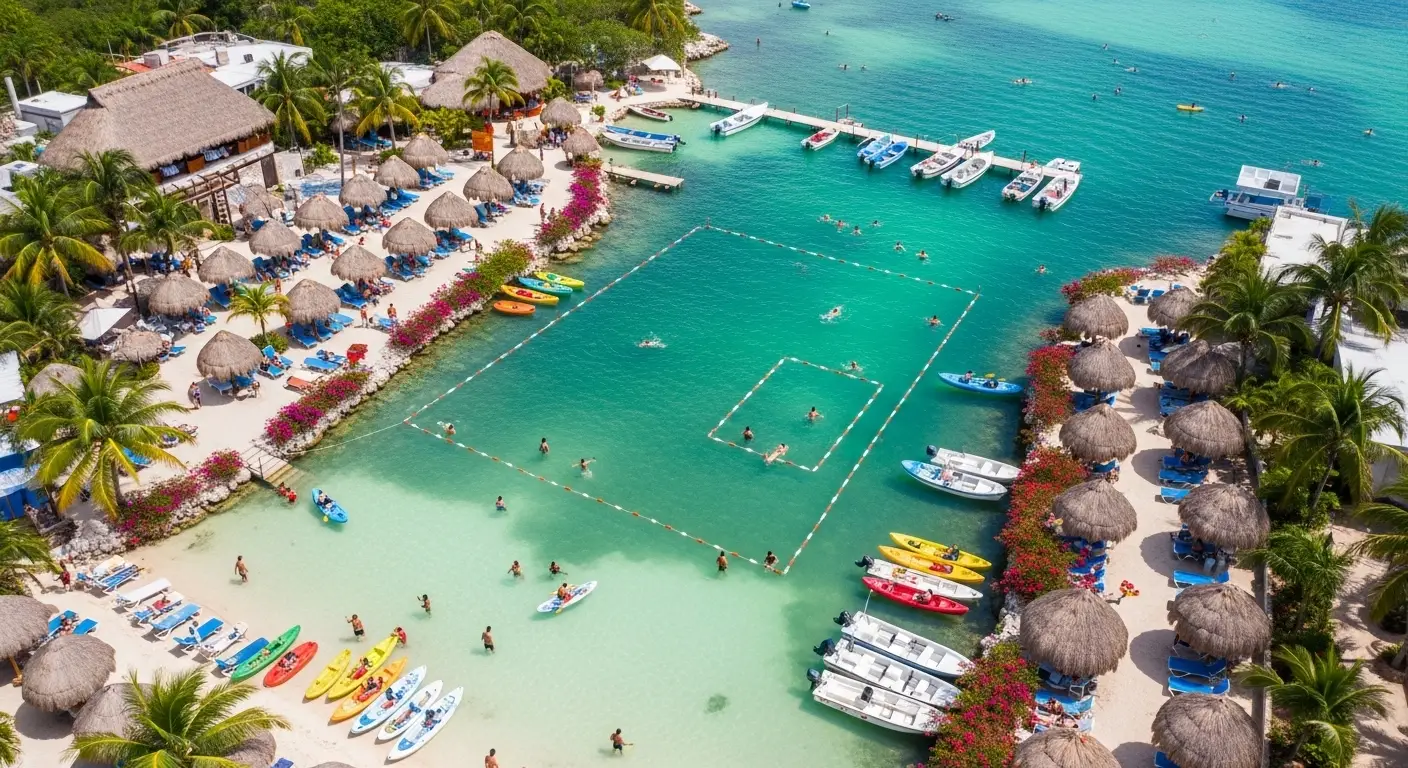You’ve seen those stunning photos of turquoise water, and now you’re planning your Bacalar trip. But somewhere between booking flights and choosing hotels, that nagging question pops up: is Bacalar mexico safe?
Let’s cut through the noise and talk about what safety really looks like in this small lakeside town. No fear-mongering, no sugar-coating—just honest insights to help you travel smart.
The Straight Answer: Is Bacalar Actually Safe?
Yes, Bacalar is one of the safest destinations in Mexico’s Quintana Roo region.
The town sees far less crime than popular spots like Cancún or Playa del Carmen. Most visitors spend their entire trip without any safety issues.
That said, “safe” doesn’t mean you can throw common sense out the window.
Bacalar’s biggest safety advantage is its size. With around 40,000 residents, this isn’t a sprawling city where tourists are easy targets.
Everyone knows everyone, and the local economy depends heavily on tourism. That creates a natural incentive for locals to keep visitors safe and happy.
The relaxed vibe you’ll feel here isn’t an illusion—it’s real. But understanding what to watch for makes your trip even better.
Best Hiking Trails in Quintana Roo
Why Bacalar Feels Different From Cancún and Tulum
Walk through Bacalar’s downtown, and you’ll immediately notice what’s missing: aggressive club promoters, drunk spring breakers, and that frantic tourist-trap energy.
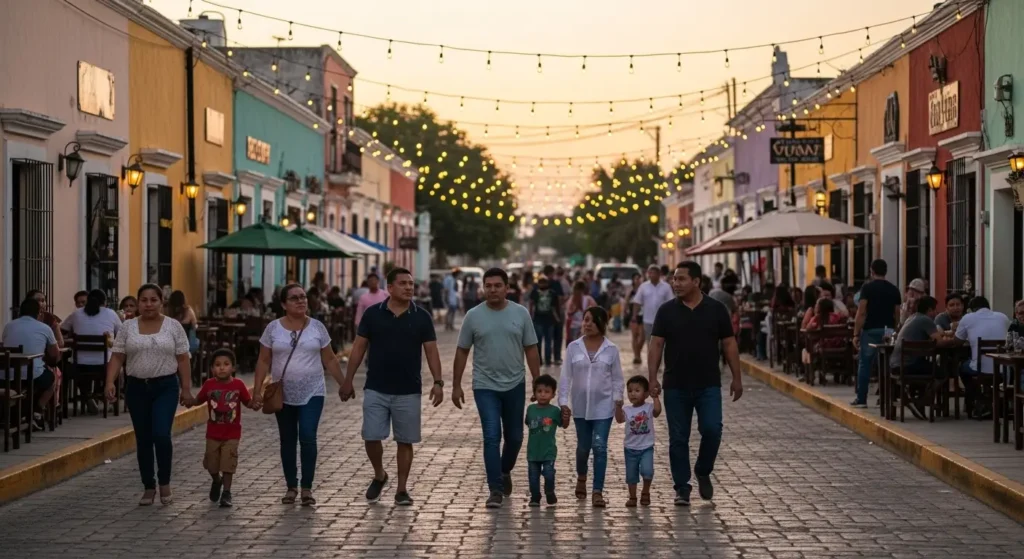
Bacalar attracts a different crowd. You’ll meet backpackers, families, and travelers looking for something beyond beach parties.
The town’s bohemian atmosphere means fewer crowds and a more genuine local experience.
Unlike Tulum’s gentrified beach zone or Cancún’s hotel strip, Bacalar hasn’t been completely transformed by tourism. Real people live here, work here, and raise families here. That authentic community feel translates directly to safety.
There’s no seedy nightlife district to accidentally wander into. No areas locals warn tourists to avoid after dark. The whole town maintains a mellow, safe-for-everyone vibe that’s honestly refreshing.
Pro tip: This small-town safety advantage also means less infrastructure, so plan accordingly for things like ATMs and late-night food options.
Crime in Bacalar: What the Numbers Really Say
Let’s talk actual data instead of vague feelings.
Bacalar’s crime rate is significantly lower than Mexico’s national average. Violent crime against tourists is extremely rare. The local police report that most incidents involve petty theft—phones left unattended at beach clubs, wallets in unlocked rental cars, that sort of thing.
How Bacalar Compares to Other Quintana Roo Towns
Put Bacalar next to its neighbors, and the difference is clear.
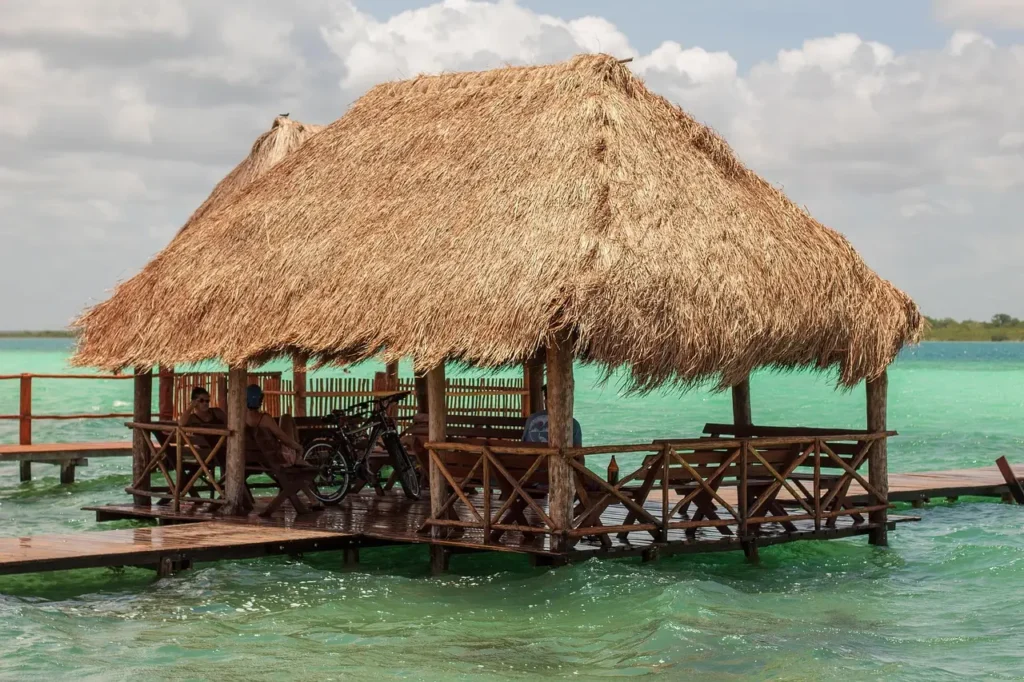
Cancún deals with organized crime spillover, tourist-targeted scams, and higher rates of robbery. Tulum has seen increasing theft and occasional violence as it’s grown more popular. Playa del Carmen struggles with pickpocketing and more aggressive hustlers.
Bacalar? It’s quieter by a long shot. The U.S. State Department doesn’t even mention Bacalar specifically in its Mexico travel advisories, which focus on larger cities and border regions.
Is Oaxaca Safe for American Tourists
What Petty Crime Looks Like Here
When crime does happen in Bacalar, here’s what it typically involves:
Opportunistic theft happens at beach clubs when people leave phones and wallets in bags while swimming. Thieves don’t get violent—they just grab unattended valuables and disappear.
Rental car break-ins occur in empty parking lots, especially at remote cenotes or viewpoints. Smashed windows and stolen backpacks are the usual scenario.
Overcharging by unlicensed taxi drivers who quote inflated prices to tourists who don’t know better. Not exactly crime, but definitely frustrating.
The pattern is clear: criminals here target carelessness, not people. Stay alert with your belongings, and you’ve already eliminated most risk.
Pro tip: Take photos of your valuables’ serial numbers before traveling—it helps with insurance claims and police reports if needed.
Is It Safe to Walk Around Bacalar at Night?
Short answer: yes, walking around Bacalar at night is generally safe.
The town doesn’t transform into something dangerous after sunset. You’ll see families out for evening strolls, restaurants buzzing with diners, and locals hanging out in the central plaza.
The Downtown Area After Dark
Bacalar’s centro remains active until about 10 PM most nights.
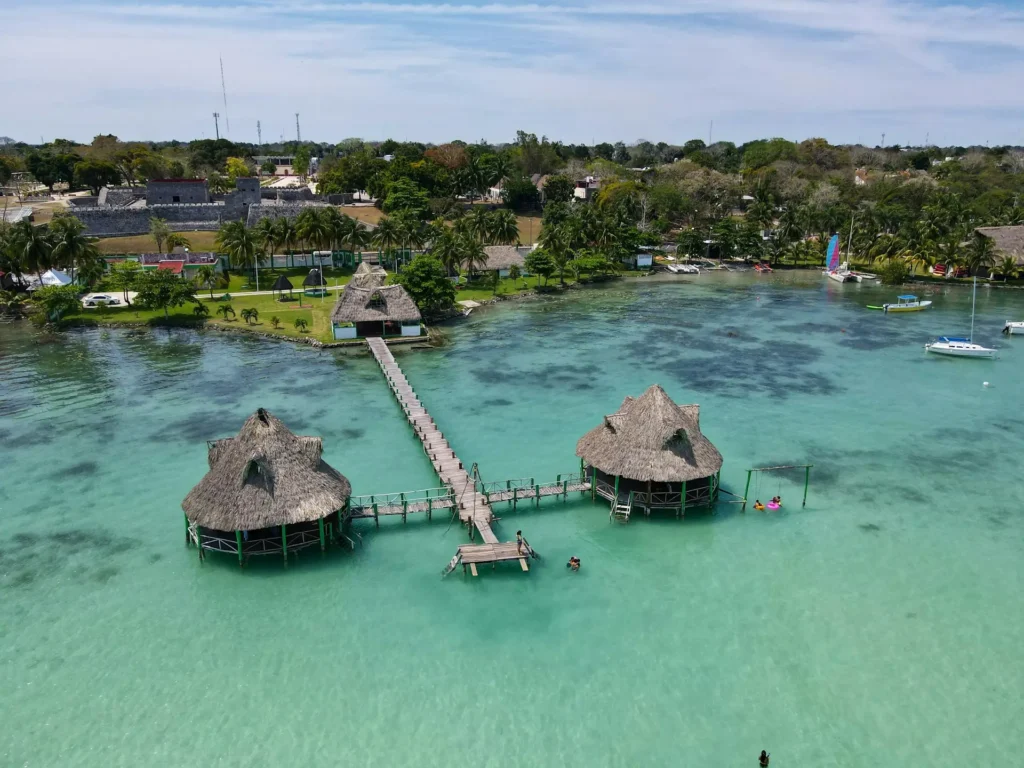
Street lighting could be better, but the main streets around the plaza are well-lit enough. You’ll find taco stands, small restaurants, and shops open. The atmosphere stays relaxed and welcoming.
Solo travelers, including women, regularly walk through downtown at night without issues. That said, stick to main streets rather than cutting through empty side roads.
It’s less about danger and more about avoiding poorly lit areas where you could trip over uneven sidewalks.
The Waterfront and Malecon
The Malecon (waterfront walkway) is arguably the safest spot in town at night.
This area sees steady foot traffic from sunset onward. Couples walk along the water, photographers capture the lagoon at night, and waterfront restaurants stay busy. The visibility is good, and there are always other people around.
The only real concern here is the lack of guardrails in some spots. Watch your step near the water’s edge, especially if you’ve had a few drinks.
Getting to Bacalar Safely
The journey to Bacalar matters just as much as safety within the town itself.
Most travelers arrive by bus or car from Cancún, Playa del Carmen, or Tulum. Both options are generally safe, but each comes with specific considerations.
Driving the Highway 307 from Cancún or Playa del Carmen
Highway 307 is the main route to Bacalar, and it’s in decent condition.
The road itself is safe, but driving in Mexico requires different awareness than driving in the U.S. or Canada. Speed bumps (topes) appear without warning, especially when passing through small towns.
Livestock sometimes wanders onto the road. And Mexican drivers have a more… creative approach to traffic rules.
Daytime driving is your best bet. The three to four-hour journey from Cancún is straightforward, and you can stop at interesting spots like the Sian Ka’an Biosphere or small roadside restaurants.
Nighttime driving is where things get riskier. Highway 307 has stretches with poor lighting, and it’s harder to spot hazards. Wildlife crossings increase, and if you break down, help isn’t as readily available.
Moreover, the police checkpoints also become more common at night.
If you’re renting a car, inspect it thoroughly before leaving the rental lot and take photos of any existing damage. Make sure you have the rental company’s emergency contact number saved in your phone.
Taking the ADO Bus
ADO buses to Bacalar are safe, comfortable, and ridiculously affordable.
These first-class buses run multiple times daily from Cancún, Playa del Carmen, and Tulum. They have air conditioning, bathrooms, and sometimes WiFi.
The drivers are professional, and the buses are well-maintained.

The Bacalar bus station sits a short taxi ride from most hotels and downtown. Arrange your pickup in advance or use a registered taxi from the station.
The Mayan Train Option
The Mayan Train now connects several Quintana Roo destinations, including a stop near Bacalar.
Early reports suggest the train is safe and comfortable. It’s operated by the Mexican government with security personnel on board. The stations have controlled access, which actually makes them safer than bus terminals in some ways.
The catch? The train schedule is still limited, and the Bacalar station is located outside town. You’ll need ground transportation from the station to your accommodation.
Safety on the Lagoon
Bacalar’s lagoon is the whole reason most people visit, so let’s talk about water safety.
The Lagoon of Seven Colors is generally safe for swimming, kayaking, and boat tours. The water is calm, and the depth varies from shallow areas perfect for wading to deeper sections for swimming.
The Crocodile Question Everyone Asks
Yes, crocodiles live in Bacalar Lagoon. No, they’re not going to eat you.
These are American crocodiles, and they’re generally shy around humans. Attacks are extremely rare—locals can’t remember the last time a crocodile bothered a swimmer.
Most crocodiles hang out in mangrove areas and along the far shore, away from popular swimming spots.

Where you’ll actually see crocodiles: On boat tours when guides point them out from a safe distance. Near undeveloped shoreline. Sometimes sunning on banks far from beach clubs.
Where you won’t see crocodiles: At busy beach clubs. In the swimming areas near downtown. At popular cenotes like Cenote Azul or Cenote Cocalitos.
Follow basic common sense: don’t swim at dawn or dusk when crocodiles are most active, avoid murky mangrove areas, and listen if locals tell you to stay out of certain spots.
Swimming and Boat Tours
Swimming in Bacalar is incredibly safe when you stick to designated areas.
The water is clear enough to see your feet, and there are no dangerous currents. Most beach clubs have roped-off swimming zones with staff keeping an eye on things.
The main hazards are sunburn and dehydration, not the water itself.
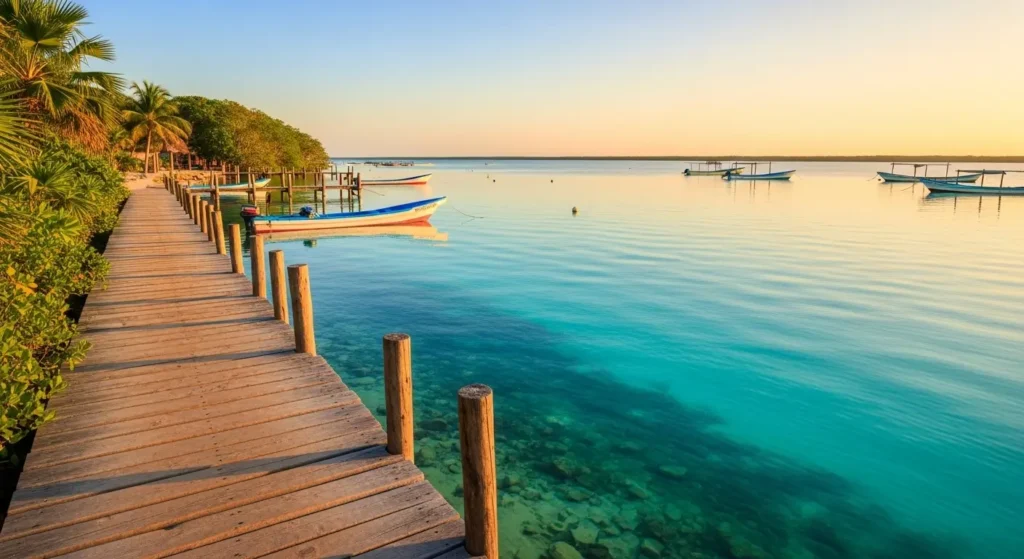
Boat tours vary in quality and safety standards.
Reputable operators provide life jackets, have certified captains, and maintain their boats properly. Sketchy operators cut corners.
Before booking, check that boats have safety equipment visible, ask about the captain’s experience, and read recent reviews.
Here are some reliable tour operators, but make sure to contact them before making your booking.
Bacalarlagoontours.com
Daytourbacalar.com
Thesailingcolibri.com
Amiradventours.com
Group sailing tours are popular, especially the sunset catamaran trips. These are generally safe and well-run by established companies.
Private boat rentals require you to trust your own boating skills—know what you’re doing or hire a captain.
Solo Female Travelers: What You Need to Know
Bacalar ranks as one of Mexico’s safer destinations for women traveling alone.
Female travelers consistently report feeling comfortable walking around independently, staying in hostels, and joining group tours.
The town’s small size and laid-back atmosphere reduce many concerns that come up in larger Mexican cities.

That doesn’t mean letting your guard down completely. Standard safety practices still apply: don’t accept drinks from strangers, tell someone where you’re going, and trust your instincts if something feels off.
What works in Bacalar’s favor: The town attracts tons of solo female travelers, so you’re not alone. Many hostels offer women-only dorms. The social scene makes it easy to meet other travelers for group activities.
What to watch for: Overly friendly strangers who want to take you to “secret spots.” Walking alone on empty roads late at night. Isolated accommodations far from town.
Harassment levels are notably lower than in beach party towns. You might get some attention, especially from vendors trying to sell tours, but aggressive catcalling isn’t part of Bacalar’s vibe.
Traveling to Bacalar with Kids
Bacalar works beautifully for family travel, and safety concerns are minimal.
The calm lagoon water, shallow entry points, and relaxed pace make this destination more kid-friendly than many beach towns.
Parents regularly bring children ranging from toddlers to teenagers without major worries.
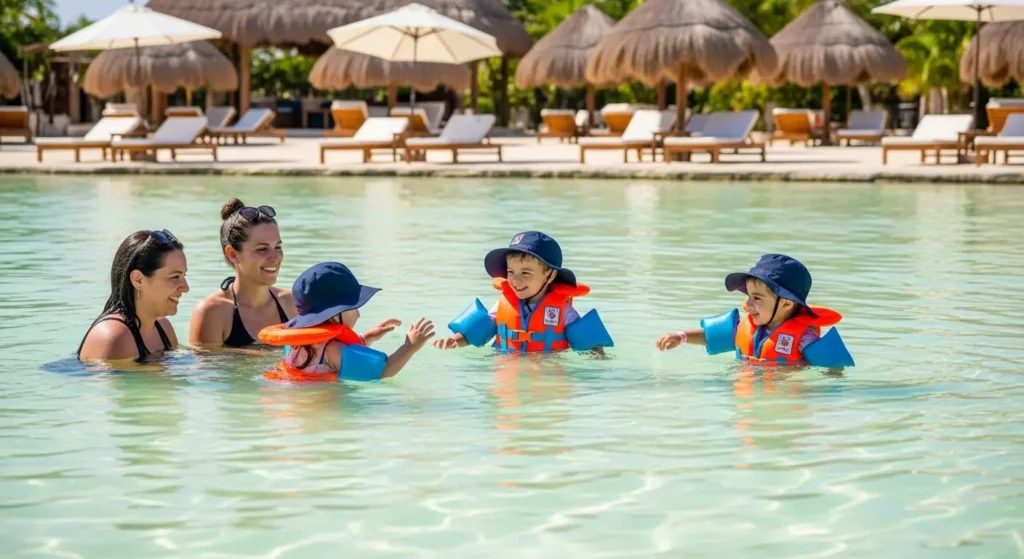
Family-friendly safety factors: No dangerous waves or riptides. Shallow lagoon areas perfect for young swimmers. Minimal nightlife means quieter evenings. Locals are generally warm toward children.
Watch out for: Intense sun exposure, especially with young kids. The tropical sun is no joke. Bring plenty of sunscreen, hats, and seek shade during peak hours.
Drinking water: Stick to bottled water for the whole family. Most restaurants serve purified water and ice, but confirm before ordering.
Activities like Los Rápidos (a series of small rapids and swimming holes) are suitable for kids who can swim confidently.
Life jackets are available for rent, and the water is shallow enough in most sections that adults can touch bottom.
Watch Out for These Common Scams
Bacalar’s scam level is low compared to major tourist cities, but awareness helps.
Visitors rarely face elaborate cons or dangerous situations. Most scams involve overcharging or misleading information about tours and transportation.
Taxi Overcharges
Unregistered taxi drivers quote wildly inflated prices to tourists.
The ride from Bacalar bus station to downtown hotels should cost 50-80 pesos. Some drivers will say “200 pesos” with a straight face. From town to the Mayan Train station might be 150-200 pesos, not the 500 some drivers claim.
How to avoid it: Ask your hotel for normal taxi prices before arriving. Use apps like Uber. Agree on price before getting in the taxi. Consider renting a bike for local transportation.
Tour Operator Red Flags
Not all tour companies operate with the same standards.
Red flags to watch for:
- Operators approaching you aggressively on the street
- Prices significantly lower than established companies
- No visible office or online presence
- Pressure to book immediately with claims of limited availability
- Boats that look poorly maintained
- No visible safety equipment
Safer booking approach: Research companies online before arriving. Read recent Google and TripAdvisor reviews. Book through your hotel if they have trusted partnerships. Ask about safety equipment and insurance before paying.
The Real Health Risks in Bacalar
Here’s what actually sends travelers to doctors in Bacalar: sun, heat, and digestive issues.
Crime worries most visitors before arrival, but health concerns cause the actual problems. Pack smart and you’ll handle these risks easily.
Sun and Heat: Your Biggest Concern
The tropical sun in Bacalar is intense, especially reflecting off the lagoon.
Sunburn happens fast. An hour on the water without reapplying sunscreen can leave you miserable for days. Bring high-SPF sunscreen, reapply constantly, and wear protective clothing. Wide-brimmed hats aren’t just fashion—they’re functional.
Heat exhaustion sneaks up on you. The combination of sun exposure, physical activity, and forgetting to drink water catches people off guard. Symptoms include dizziness, nausea, excessive tiredness, and headaches.
Stay hydrated constantly. Drink more water than feels necessary. Take breaks in shade. The lagoon water is refreshing, but it doesn’t replace actual hydration.
Water Quality and Food Safety
Tap water: Don’t drink it. Brush your teeth with bottled water if you have a sensitive stomach.
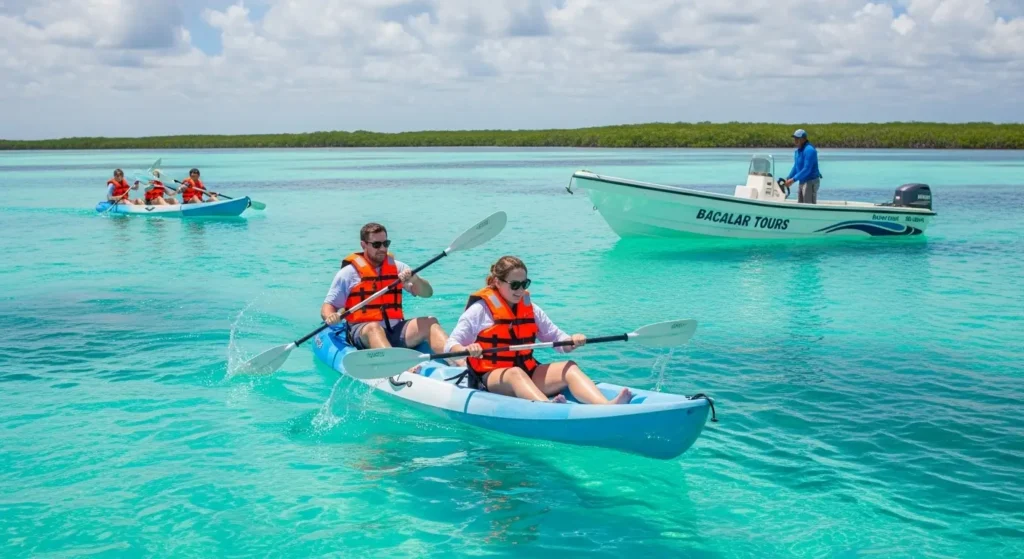
Ice in drinks: Usually safe at established restaurants that use purified water. Ask if you’re unsure. Avoid ice from street vendors unless you see them using purified water sources.
Food safety: Bacalar’s restaurants generally maintain good hygiene standards. Street food is popular and usually safe, but watch for busy stalls with high turnover—food doesn’t sit around getting contaminated. Avoid raw seafood from questionable sources.
Where to Find Medical Help
Bacalar has basic medical services for common issues.
For minor problems: Local pharmacies (farmacias) can help with minor ailments. Many have doctors on site who consult for free or minimal fees. They can provide prescription medications for stomach issues, infections, and other common travel problems.
For serious issues: The nearest full hospital is in Chetumal, about 40 minutes away. Ambulance service exists but might be slow. Serious emergencies sometimes require transport to Cancún.
Travel insurance becomes important if you need serious medical care or evacuation. Mexican hospitals often require payment upfront before treatment.
Comparing Safety: Bacalar vs. Tulum vs. Playa del Carmen
Let’s put Bacalar’s safety in perspective against its popular neighbors.
Bacalar has minimal violent crime, low theft rates, and a relaxed atmosphere. The biggest dangers are environmental (sun, heat) rather than human. Tourist scams exist but aren’t aggressive. Solo travelers and families feel comfortable here.
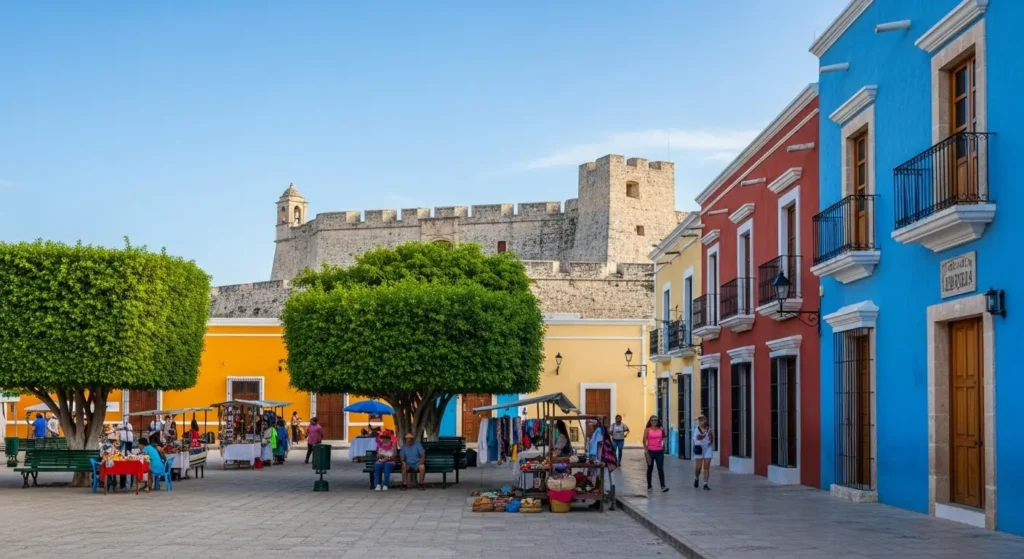
Tulum has seen increasing theft and occasional violence as popularity exploded. The beach zone and downtown have different safety levels.
Bike theft is common, and rental car break-ins happen regularly. Scams are more sophisticated. Still relatively safe, but requires more awareness than Bacalar.
Playa del Carmen deals with pickpocketing on Quinta Avenida, occasional violent incidents, and more aggressive hustlers. Tourist areas are generally safe, but you need better situational awareness.
The party scene attracts both fun seekers and opportunistic criminals.
The bottom line: Bacalar wins on safety. It hasn’t reached the tipping point where tourist crowds attract organized crime and aggressive scammers.
Visit now while it maintains that genuine small-town safety.
Best Areas to Stay in Bacalar
Where you stay affects your experience and safety level in Bacalar.
The town isn’t large, but different areas offer different vibes. All areas are generally safe, with variations in convenience and atmosphere.
Centro vs. North Shore vs. South Shore
Centro (Downtown): The most convenient and social option. Walking distance to restaurants, shops, and the malecon. Budget hostels and mid-range hotels cluster here.
Also, safest for walking at night since streets have more activity and lighting. Can be noisier during holidays and weekends.
North Shore: Quieter and more upscale. Hotels and Airbnbs sit along the lagoon with private docks. You’ll need transportation to reach downtown (bike, taxi, or rental car).
South Shore: The most remote option. Spectacular lagoon views and ultimate privacy. Definitely requires transportation since nothing is walking distance. Great for couples and families who want seclusion, but solo travelers might feel isolated.
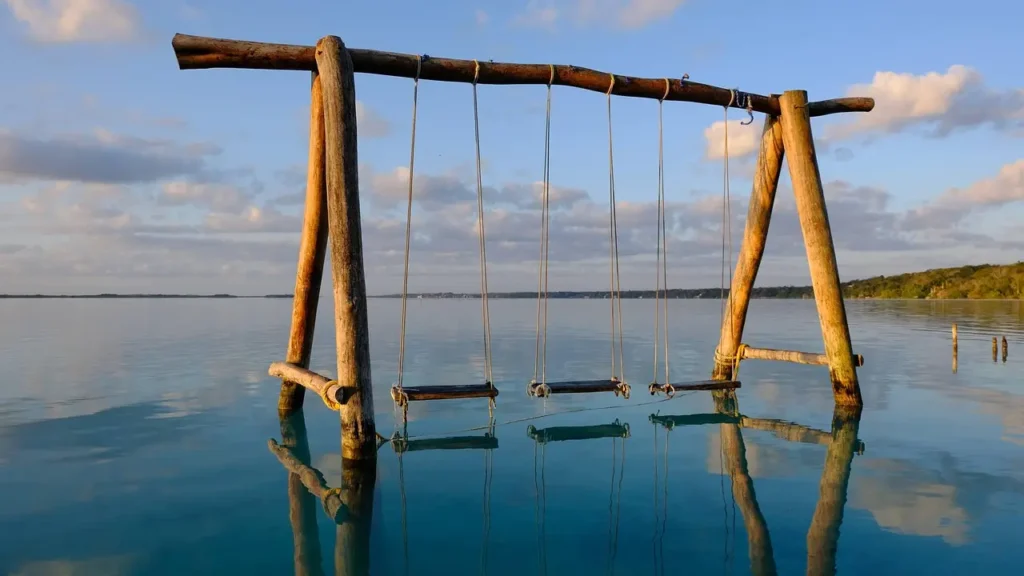
Safety-wise: All three areas are secure. Centro offers more activity and lighting at night. North and South Shore require planning for transportation after dark.
Pro tip: First-time visitors should consider staying in Centro for easy access to everything, then explore other areas on future visits.
Safety Tips That Actually Work
Skip the paranoid travel advice and focus on what genuinely makes a difference.
What to Keep With You
Essentials for day trips:
- Copy of passport (not the original unless crossing the border to Belize)
- Enough cash for the day in small bills
- One credit/debit card, leaving others at the hotel
- Phone with emergency contacts saved offline
- Small first aid kit with basics
What to Leave at the Hotel
Lock these in your room safe:
- Original passport
- Extra credit cards and cash
- Electronics you’re not using
- Jewelry and expensive watches
- Backup copies of important documents
Most accommodations provide safes in rooms. If not, ask reception about secure storage. Don’t carry valuables to the beach or on boat tours unless absolutely necessary.
Smart habits that prevent problems:
- Take photos of your credit cards (front and back) and store them separately
- Share your itinerary with someone back home
- Keep some emergency cash hidden in a separate bag
- Note your hotel’s address in Spanish on your phone
- Bring a luggage lock for hostel stays
Pro tip: Create a digital backup folder with copies of your passport, insurance, and important documents accessible from any device through cloud storage.
When to Visit: Does Timing Matter for Safety?
Bacalar’s safety remains consistent year-round, but other factors change with seasons.
Crime doesn’t spike during particular months. The bigger consideration is weather, crowds, and natural risks.
Hurricane Season Considerations
Hurricane season runs June through November, with peak activity August through October.
Safety concerns during this period:
- Tropical storms can develop quickly
- Heavy rain makes roads dangerous
- Some tour operators shut down in bad weather
- Flooding occasionally affects low-lying areas
The reality: Most days during hurricane season are perfectly fine. Storms don’t hit constantly. Weather patterns are predictable enough to track.
If you visit during hurricane season:
- Buy travel insurance with storm coverage
- Monitor weather forecasts daily
- Have flexibility in your itinerary
- Know your hotel’s hurricane protocol
- Keep phone charged for emergency alerts
High season (December-April) brings more tourists but no safety concerns. Prices increase and popular spots get crowded, but Bacalar never reaches Cancún-level chaos.
Low season (May-November) offers better prices and fewer crowds. Some businesses reduce hours or close temporarily, but most tourist services operate normally.
Pro tip: September and October see the fewest tourists and best accommodation deals, but they’re also peak hurricane months—weigh the trade-offs based on your risk tolerance.
Is Bacalar Safe Enough for Your Trip?
Let’s bring this all together with a clear recommendation.
Bacalar is safe enough for virtually every type of traveler. Families, solo adventurers, couples, retirees, and digital nomads all visit successfully. The town’s laid-back atmosphere and low crime rate make it one of Mexico’s most stress-free destinations.
You should feel confident visiting if:
- You practice basic travel safety (don’t flash valuables, stay aware of surroundings)
- You’re comfortable in small towns without extensive tourist infrastructure
- You accept that petty crime exists everywhere and can be managed with common sense
- You’re willing to learn a few Spanish phrases (helpful but not required)
You might reconsider if:
- You need extensive medical facilities immediately accessible
- You’re uncomfortable in any developing country setting
- You require intensive tourist infrastructure and English spoken everywhere
- You’re looking for a wild party scene (wrong destination entirely)
The honest truth? Bacalar is safer than most places you’ve probably already traveled. Standard precautions that work in any destination work here. Trust the thousands of travelers who visit yearly without incident.
Your biggest risks aren’t crime-related—they’re sunburn, dehydration, and believing you can handle more mezcal than you actually can. Pack sunscreen, drink water, and use common sense.
Final thought: Don’t let safety worries keep you from experiencing Bacalar’s magic. The turquoise lagoon, friendly locals, and peaceful atmosphere create one of Mexico’s most rewarding destinations. Book that trip.
Pro tip: Join online Bacalar travel groups before your visit to ask specific questions and get real-time updates from travelers currently there—firsthand reports beat any guide.
General Emergency Numbers in Bacalar Mexico:
- Police – 911
- US Embassy in Mexico: +52-55-8526-2561 (for US citizens)
- Canadian Embassy: +52-55-5724-7900 (for Canadian citizens)
- Municipal Police Bacalar: +52-983-834-2477
- Bacalar Tourist Information: +52-983-834-2886
- Nearest major hospital is in Chetumal (about 40km away) – +52-983-832-1932
